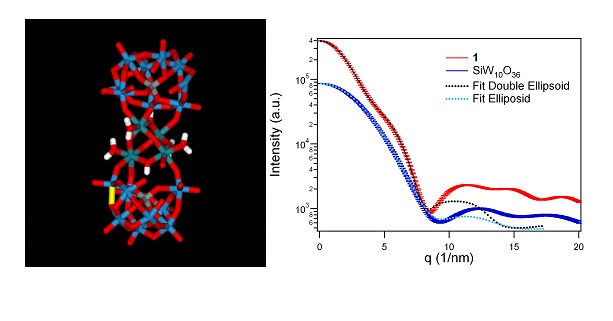SAXS
Small Angle X-ray Scattering
Characterisation Installation 4
Small Angle X-ray Scattering is a non-destructive and highly versatile standard method to study at the nanoscale the structure of any type of material ranging from new composite nanosystems to biological macromolecules. With this technique, the in- homogeneities of the electron density in the samples are measured, as a function of the scattering angle.
The investigated sample is irradiated with a monochromatic radiation, and scattered X-rays are typically collected in an angular range of 0 – 10° by a suitable detector. By means of appropriate model fittings and reconstructions, SAXS data deliver information on averaged particle sizes, shapes, distributions and materials' porosity.
SAXS allows structural studies in a dimension range typically between 1 and 100 nm; the dimension limits depend on the selected instrument. Samples can be probed in solution, solid, at the interface or in the gas phase; with specially designed sample holders, they can be measured under various conditions, like at different temperature, humidity, high pressure. Moreover, SAXS can be used for time-resolved studies on fast structural transitions during chemical reactions or self-assembly process.
Grazing-incidence (GISAXS) measurements can be performed to study self-assembly processes on surfaces, as well as to perform structural characterisations of thin films.
At wider scattering angle (Wide Angle X-ray Scattering, WAXS), intramolecular dimensions, as well as the degree of crystallinity of the samples, can be probed.
WARNING: Access to DESY temporarily not available, but the technique is available at the other sites


